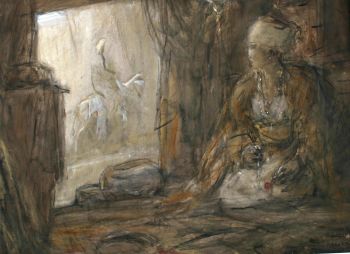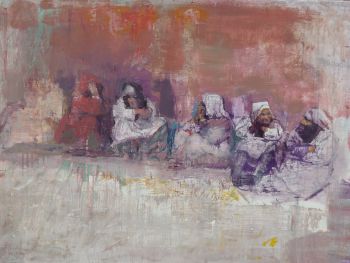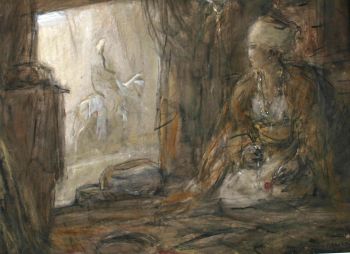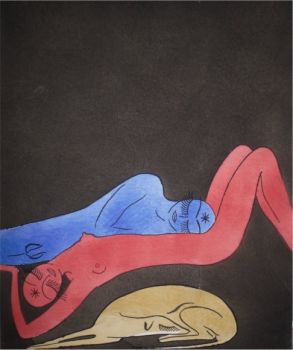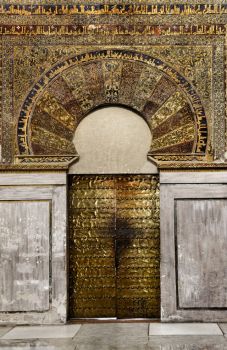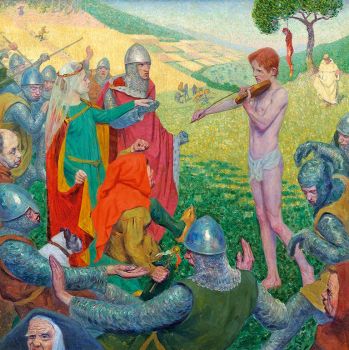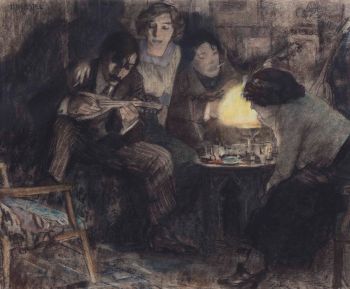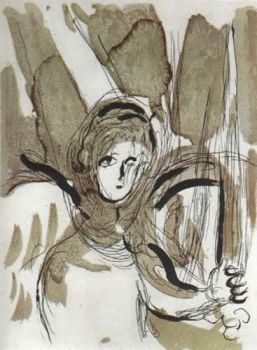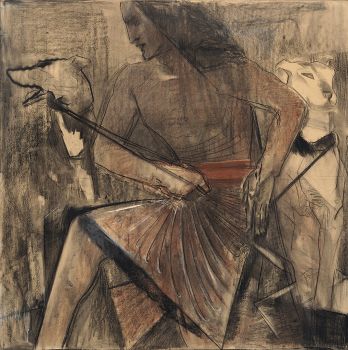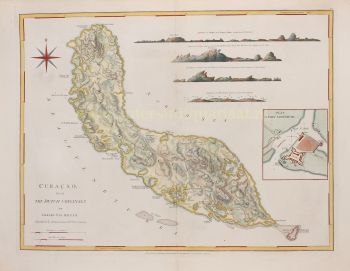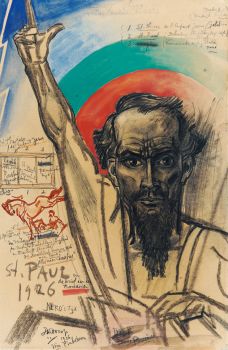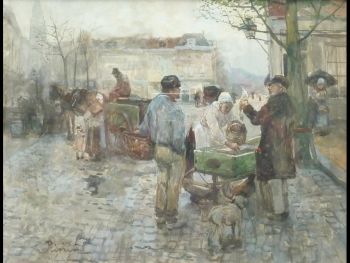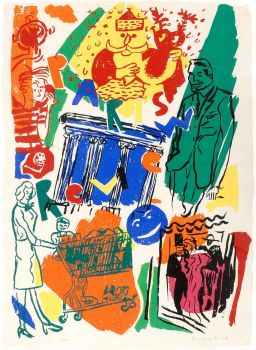First combined edition of Symmachus's letters together with Mehmed II's fictitious letters 19
Quintus Aurelius Symmachus
Carta
Attualmente non disponibile tramite Gallerease
- A proposito di opere d'arteEpistolae familiares.
Including: ZACCHIA, Laudivius. … in epistolas Turci magni traductio.
(Colophon: Strassburg, Johann Schott for Georg Übelin, 8 August 1510). 4to. 19th-century half calf, tiger marbled sides, tiger marbled paste-downs (rebacked, with original backstrip laid down).
First dated edition of Epistolae familiares containing 343 letters by the Roman statesman and orator Quintus Aurelius Symmachus (ca. 345-402), addressed to a wide circle of relations, friends, and acquaintances and all written in a refined style. Although many of them are only short notes, together they provide a fascinating window into the late Roman senatorial aristocracy. The priority of the editions is uncertain, but what is often considered the first was published in Venice between 1503 and 1513.
The main text is followed by a spurious collection of letters from and to the Ottoman Sultan Mehmed II (1432-1481), but actually written by the humanist Laudivius Zacchia. "The so-called Epistolae magni Turci begin with a letter from Mehmed … to Zancassanus, 'King of Persia'. As in the rest of the collection, the exchange follows a set pattern: angry, menacing boasts from the sultan, followed by a reply from the threatened party, which parries the worst of the bluster and thus rhetorically disarms the Turk" (Meserve). The book, first published in 1473, was a success and reprinted numerous times well into the 17th-century, undoubtedly because many Europeans feared the advancing Ottoman Empire (the Battle of Mohács was to give the Ottomans a decisive victory in Hungray in 1526).
The present edition is the first combined edition of the two works. Another edition including both works was published only two months later by another Strassburg publisher Johann Grüninger on 9 October 1510. A line for line reprint of the present edition was published in 1511.
With some underscoring and a few annotations in the margins. Paper slightly browned with a few occasional spots. Binding rebacked. Good copy.
Brunet V, col. 612; Graesse VI, p. 538; VD 16, S10390 (8 copies); cf. Meserve, Empires of Islam in Renaissance historical thought (2009), p. 228; not in Adams. - A proposito di opere artistaQuinto Aurelio Simmaco (c. 345 – 402) fu educato in Gallia. Era uno statista romano aristocratico molto eloquente. Simmaco fu proconsole (governatore) d'Africa nel 373, prefetto urbano di Roma nel 384 e 385 e console nel 391. Cercò senza successo di preservare la religione tradizionale di Roma. Fu confutato da Ambrogio, vescovo di Milano, nella famosa questione Vittoria-altare. (Alcuni senatori vollero che l'altare della dea Vittoria - rimosso dall'imperatore Graziano - tornasse in senato). Molti dei suoi scritti sono sopravvissuti: nove libri di lettere, una raccolta di Relationes (dispacci ufficiali), tre panegirici (elogi funebri). Simmaco si impegnò anche alla pubblicazione dell'opera storica di Livio Ab urbe condita (Dalla fondazione della città), libri I-X.
Artwork details
Categoria
Soggetto
Materiale e Tecnica
Related artworks
Antonie Derkinderen
Memory book Exhibition of Dutch Painting1892
Prezzo su richiestaKunsthandel Pygmalion
Tilmanus Nicolaus Maastricht
Missale Romanum con fornimenti d'argento olandesi1788 - 1792
Prezzo su richiestaJacob J. Roosjen SRI
Engelbert Kaempfer
IL LIBRO DI ENGELBERT KAEMPFER1651 - 1716
Prezzo su richiestaZebregs & Röell - Fine Art - Antiques
Yoko Ono
YOKO ONO: "ARISING" SIGNED BOOK PLUS SMALL ARTWORK 2010 - 2014
Prezzo su richiestaGallerease Selected
Antonie Derkinderen
Memory book Exhibition of Dutch Painting1892
Prezzo su richiestaKunsthandel Pygmalion
Tilmanus Nicolaus Maastricht
Missale Romanum con fornimenti d'argento olandesi1788 - 1792
Prezzo su richiestaJacob J. Roosjen SRI
Hermann Nitsch
"UNDER MY SKIN" Signed book incl. small artwork and DVD in a matching box2010 - 2014
Prezzo su richiestaGallerease Selected
1 - 4 / 22Elisabeth Treskow
Lapislazzuli afgano intarsiato con oro su un supporto d'argento1950 - 1960
Prezzo su richiestaJacob J. Roosjen SRI
Elisabeth Treskow
Lapislazzuli afgano intarsiato con oro su un supporto d'argento1950 - 1960
Prezzo su richiestaJacob J. Roosjen SRI
Artista Sconosciuto
IMPORTANTE E RARO GRANDE DIPINTO INDIANO "COMPANY STYLE" SU AVORIO RAFFIGURANTE UNA SFILATA1850 - 1900
Prezzo su richiestaZebregs & Röell - Fine Art - Antiques
 A cura di
A cura diDanny Bree
1 - 4 / 24Artista Sconosciuto
Due ritratti di studio di Mas Marco Kartodikromo1900 - 1950
Prezzo su richiestaZebregs & Röell - Fine Art - Antiques
Jan Sluijters
Original illustration of Sluijters for the book: 'Laura's opstel'1881 - 1957
Prezzo su richiestaKunsthandel Pygmalion
1 - 4 / 24
























